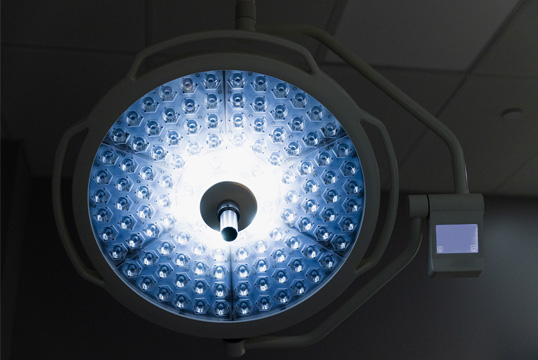Quick Links

Cosmetic surgery is often performed on the ears and can address a variety of concerns, from repairing torn or stretched earlobes to setting back prominent ears and even reducing large ears. These procedures can be done in childhood or adulthood, depending on the problem. Besides her expertise in cosmetic and facial plastic surgery, Dr. Capek is fellowship trained in pediatric plastic surgery and therefore has the added skills to treat young children with ear shape concerns. However, ear surgery will not cure chronic ear infections or damage to the ear canal or inner ear. If you have these concerns, we are happy to give you recommendations for ENT specialists.
If you’re considering ear surgery for yourself or your child, this information will give you a basic understanding of the various procedures we offer – when they can help, how they are performed, and the results you can expect. It can’t answer all of your questions since a lot depends on your individual circumstances. Please be sure to talk to Dr. Lucie Capek about any of your concerns.
Setback Otoplasty (Prominent Ears)
This is one of the most common types of ear surgery (otoplasty) and is usually done to set prominent ears back closer to the head. This operation is often performed on children as young as five, but we treat teenagers and adults with this problem as well. In children, prominent ears may be the source of teasing or bullying. In such cases, otoplasty is reasonable to consider, especially since our ears are almost fully grown by age five.
Setback Otoplasty is a popular procedure among both male and female adult patients as well and generally carries no additional risks. It is typically performed under local anesthesia in our QuadA-accredited office-based operating suite, Capek Surgical Arts, or a hospital operating room. Lighter anesthesia and quick recovery are advantages of this cosmetic ear surgery procedure.
Large Ear Reduction (Macrotia)
Many men and women perceive their ears as being too large, sometimes because the height of their ears is taller than average. This may occur in young people or become an issue later in life, and negatively affects self-esteem and confidence. Most people have no idea that this can be improved with plastic surgery! An elegant and relatively minor procedure called macrotia reduction, or Reduction Otoplasty, involves removing some cartilage and skin through hidden incisions. In adults, this procedure is often performed under local anesthesia and either oral or IV sedation in our QuadA-accredited office-based operating suite, Capek Surgical Arts, or a hospital operating room. Downtime is about a week.

Before Your Procedure
Pediatric Patients: Most surgeons recommend that parents stay alert to their child’s feelings about protruding ears; don’t insist on the surgery until your child wants the change. Children who feel uncomfortable about their ears and want the surgery are generally more cooperative during the process and happier with the outcome. In your initial consultation, Dr. Capek will evaluate your child’s condition, and recommend the most effective technique. She will also give you specific instructions on how to prepare for surgery.
Adult Patients: In order to have optimal healing and a low risk of complications, a healthy lifestyle is imperative. This includes no smoking or consumption of nicotine-containing products at least 3-4 weeks prior to and after your procedure. You will also receive specific instructions regarding medications to stop and recommended supplements to help the healing process.


board-certified plastic surgeon
DR. LUCIE CAPEK
Dr. Lucie Capek offers advanced cosmetic plastic surgery from the unique perspective of a female plastic surgeon. Since 1996, she has been serving patients in the Capital District from Albany, Saratoga, Schenectady, and Troy, NY. She is known for using the latest technology to perform body contouring, breast surgery, and facial cosmetic surgery. She personalizes every treatment to give each patient the most natural-looking results, enhancing their beauty and increasing their self-confidence. Above all, her practice is dedicated to your health and wellness. Dr. Capek understands that your beauty and confidence is about more than just your appearance. To schedule your first consultation, contact Lucie Capek, MD.
LEARN MOREYour Procedure
Otoplasty surgery in our teen or adult patients is typically performed under local anesthesia and oral sedation in our QuadA-accredited office-based operating suite, Capek Surgical Arts. If your young child is having otoplasty surgery, we recommend a hospital operating room and general anesthesia for added comfort and safety.
Ear surgery usually takes about one to three hours. The surgical technique depends on the problem. For setback, Otoplasty, Dr. Capek makes a small hidden incision in the back of the ear to expose the ear cartilage. She sculpts and contours the cartilage to recreate a natural-looking curve that rotates the ear back toward the head. Internal stitches are used to help maintain the new shape.
For Macrotia Reduction, Dr. Capek removes both skin and cartilage from the outer ear to reduce the height of the ears into a more average range with minimal scarring, while leaving the shape of the ear looking normal. External stitches are typically dissolvable when the incisions are located behind the ears. In macrotia surgery, some removable sutures are used in hidden folds in the front of the ear.
After Your Procedure
Adults and children are usually up and around within a few hours of surgery and are then discharged home. The patient’s head will be wrapped in a bulky bandage immediately following surgery to maintain the new shape of the ears and promote healing. The ears may throb or ache a little for a few days, but this can be relieved by medication, and the discomfort is usually mild.
Within a few days, the bulky bandages will be replaced by a lighter head dressing similar to a headband. Be sure to follow your surgeon’s directions for wearing this dressing, especially at night. Stitches are usually removed or will dissolve in about a week.
Children can return to school within a week and most adults can go back to work in that timeframe as well. Any activity in which the ears might be bent should be avoided for 2 months to avoid reopening stitches on the surgical site. As a result, children will be restricted in their playground or sports activities and potential contact sports are to be avoided. Many children have this surgery over the summer break to minimize conflicts with school and sports.
What Are the Risks?
When ear surgery is performed by a qualified, experienced surgeon, like Dr. Capek, complications are infrequent and usually minor. However, with any operation, there are risks associated with surgery and specific complications with this procedure. The most common complication for set-back otoplasty is some recurrence of the prominence of the ear over a period of months.
A small percentage of patients may develop bleeding under the skin of the ear in the first few days after surgery. If a clot forms, it may dissolve naturally or may need to be drawn out with a needle. Infections are rare but may develop in the cartilage, which can cause scar tissue to form. Such infections are usually treated with antibiotics. Rarely, surgery may be required to drain bleeding or clean out the infected area.

QuadA Accredited
CAPEK SURGICAL ARTS
Dr. Capek is pleased to offer her patients an intimate, comfortable and discreet surgical experience at Capek Surgical Arts (CSA), her state-of-the-art Quad A accredited operating suite right here in Latham, NY. You can undergo your procedure under the expert care of board-certified Plastic Surgeon Dr. Capek and her exceptional team of anesthesia and clinical staff without having to go to a hospital or surgery center.. Cae you can expect with Dr. Capek and her team.
LEARN MOREEarlobe Injuries and Deformities
Earlobes can often be pierced or torn and they thin out with age. We perform reconstructive surgery on the earlobes for a variety of reasons.
If you have a torn earlobe, this is easily repaired and you can even re-pierce a few weeks later. Tired of your gages? This too can be fixed with a minor surgical procedure where stretched tissue is removed and a smaller earlobe is reconstructed. In older patients, an earlobe reduction can create a more youthful appearance and is sometimes done in combination with a facelift.
Complications associated with these relatively minor procedures are uncommon. Minor bleeding or infections may occur, as well as the formation of abnormal scars. In most people, however, scars from these procedures are limited and fade a lot with time.
Schedule a Consultation
Patients throughout the Capital District trust New York Plastic Surgeon Dr. Lucie Capek to perform their ear surgery. Many of our patients also travel from New York City, Vermont, Massachusetts, and beyond to receive her skilled and compassionate care.
To schedule a consultation, please give us a call at 518-786-1700 or click here. You can also check out our Instagram or Facebook for more information and before & afters!
SCHEDULE A CONSULTATION
For more information, schedule your consultation appointment with Dr. Capek today!








